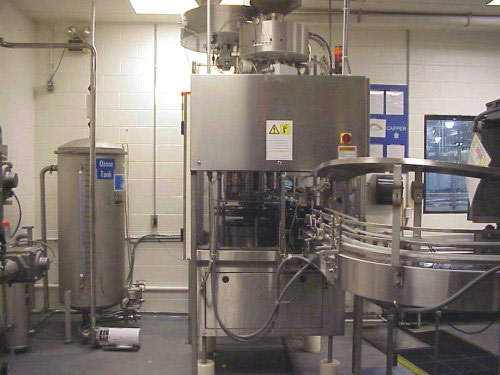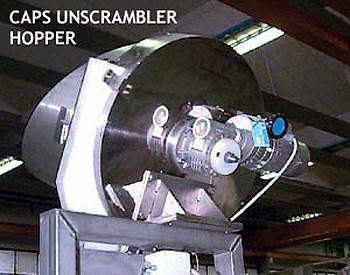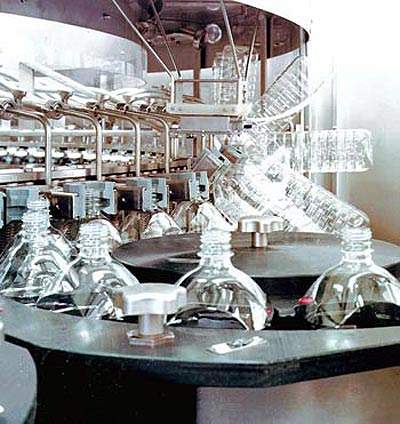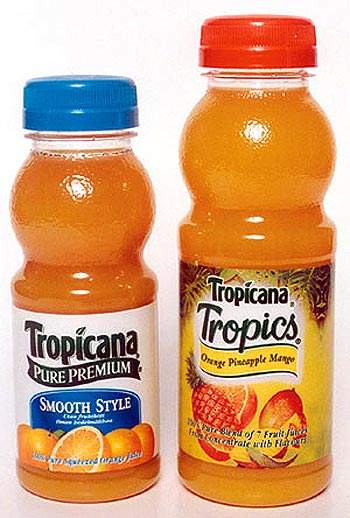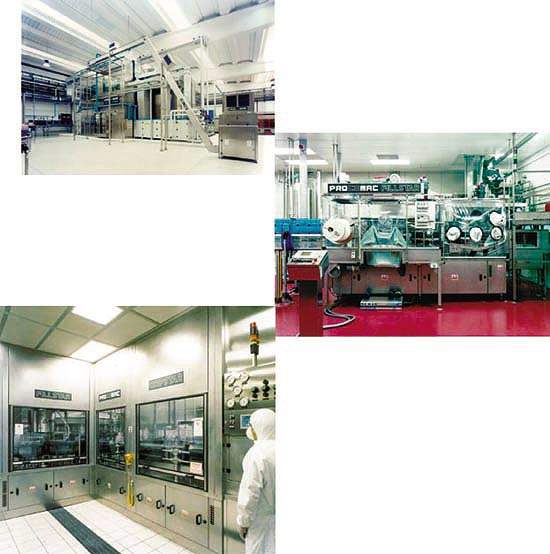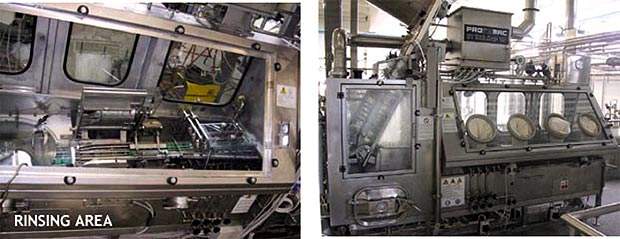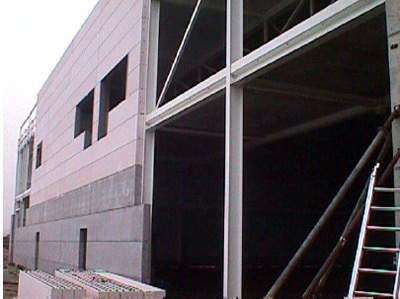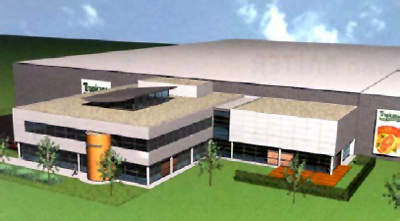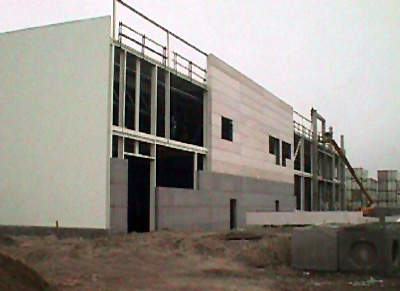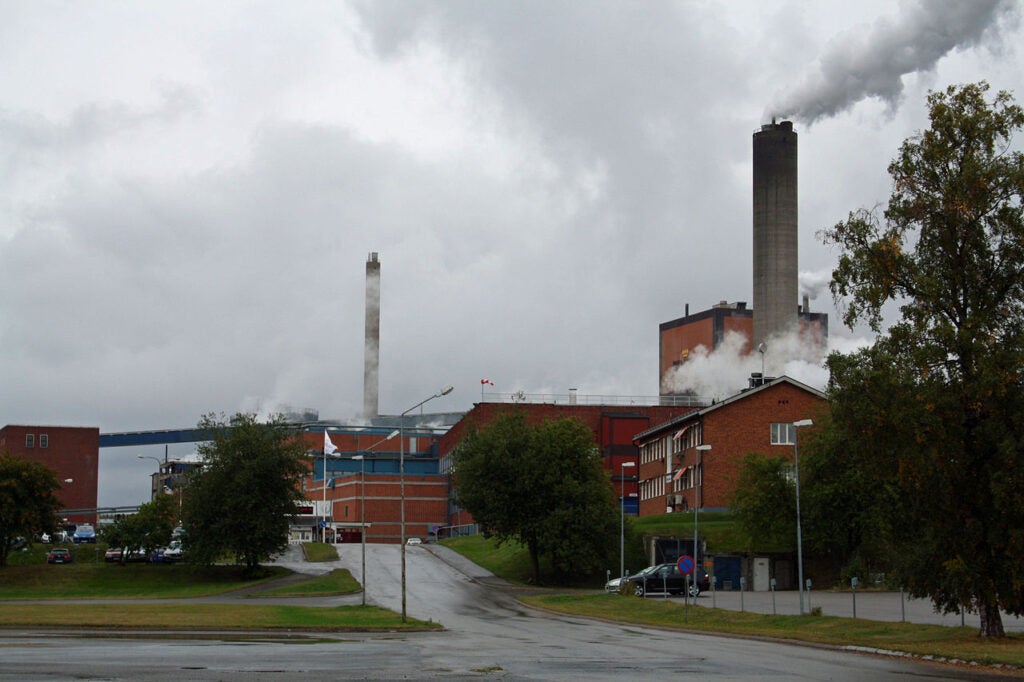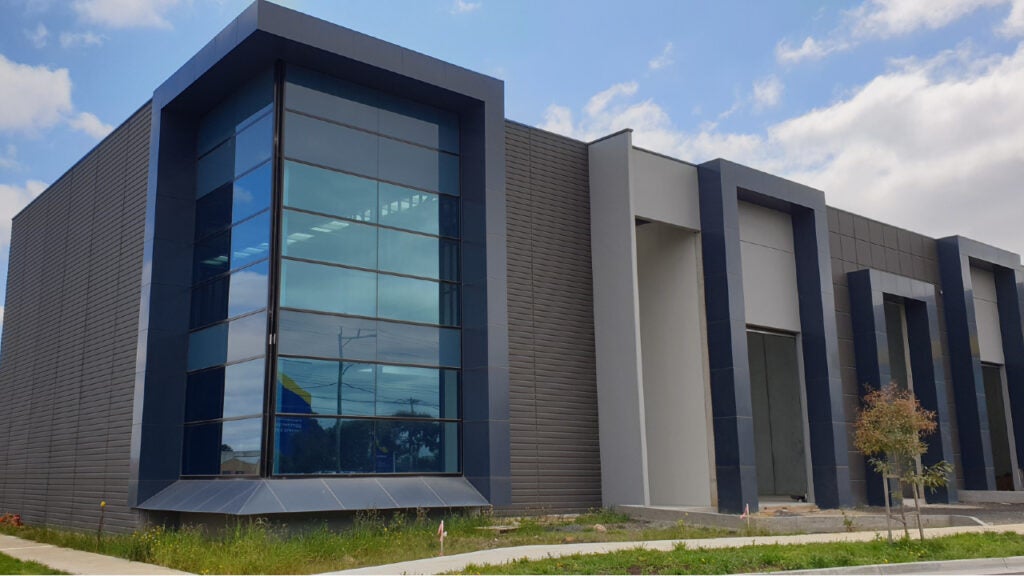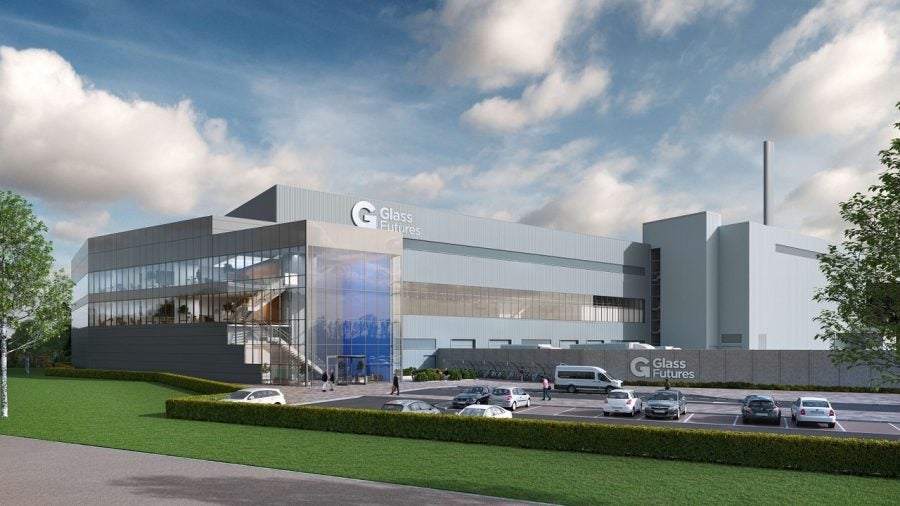Tropicana Europe, a division of Pepsi Beverage International, completed the construction of a new fruit juice packaging plant in Zeebrugge, Belgium, in the first quarter of 2003. It was the first of Tropicana’s European plants to be built from scratch.
The 35,000ft² plant, which required an estimated investment of €50m, was started in late 2001 and sited in the Port of Zeebrugge in order that it could receive bulk shipments of fruit juice by shipping tanker from Brazil and Florida, USA.
The new packaging line is to pack a range of Tropicana branded fruit juice drinks in 250ml and 330ml bottles, including the Looza range.
The packaging line at the plant fills the bottles aseptically; the bottled products are sold from refrigerated cabinets and this means that the shelf life of the products can be extended to 62 days, which is more than similar products that are packaged using the less expansive ultra-clean technology.
BOTTLE-FILLING LINE CONTRACTORS
The production area of the bottling plant consists of ten units, battery room, offices and recreational spaces. The majority of the plant is of steel construction except the laboratory and utility buildings which had to be of concrete construction because of fire regulations.
The architects for the project were Reginald Schellen. The construction company responsible for the foundations were TAB plc of Roeselare. The project managers and engineers for the project were Jacobs Belgium plc based in Antwerp. The main construction company for the project was Coene Construct of Kortrijk.
The aseptic preparation and filling line was supplied and installed by Procomac, Italy. The depalletising machine for the PET bottles was supplied and installed by Krones. The capping equipment was supplied and installed by Arol Spa. Owens-Illinois are the converter company that supply the stretch blow moulded bottles in 250ml and 330ml sizes. The security system and IT systems for the plant were supplied by Captor.
Captor systems were installed to computerise all work time administration using Captor terminals and management software and a centralised SQL database for over 400 employees. The whole system is managed by just four people.
The Zeebrugge plant also has an access control system, which uses a Captor OMNI installation in conjunction with a dozen badges readers, peripherals and the management software to ensure security of the facility. This system indicates exactly who is present in the premises and who is not.
TETRA PAK AND ALFALAVAL
In 2002 Tetra Pak installed three processing lines at the new fruit juice processing plant. Tetra Pak supplied three processing lines including a Not From Concentrate (NFC) reception, NFC blending station, three Tetra Therm Aseptic Drink 100 pasteurising modules and three Tetra Alsafe aseptic tanks. The entire plant is now operated from the Tetra PlantMaster integrated control and production management system.
The Tetra Pak enhancements include many components from Alfa Laval such as a large number of mix-proof valves with ThinkTop intelligent valve control units and plate heat exchangers both as standalone units for different heating and cooling duties and as integrated parts in processing modules.
Tetra Pak found alternative solutions within several areas and proposed its own automation architecture and pasteurising expertise. Tetra Pak had previously built pasteurisers for Tropicana in Florida in the United States.
OPERATION
The 38mm-neck bottles are produced from PET by Owens-Illinois. The 250ml bottle is produced from a 21g mono-layer preform, while the 330ml bottle is produced from a three-layer 23.6g co-injection preform. The caps are produced from injection moulded polypropylene.
The incoming bottles are depalletised on a Krones depalletiser and then transported via an air conveyor to be sterilised, rinsed, filled and finally capped on a Procomac CC Unibloc 2 aseptic system. The state-of-the-art system is able to run at a full production rate of 400 bottles a minute.
THE ASEPTIC SYSTEM
The aseptic system was built inside a sterile isolator clean area system consisting of a flexible, colourless PVC ‘tunnel’, which separates the filling machine environment from the outside. The filling environment is at a slightly higher air pressure than atmospheric, and pressurised with sterile HEPA-filtered air.
The sterilising, rinsing, filling and capping equipment are located within the clean area along with the transfer starwheels, bottle and cap infeed, and capped-bottle out-feed sections.
The sterilisation process for the caps and bottles uses a liquid spray of oxonia (a combination of hydrogen peroxide and peroxyacetic acid). Maintenance and servicing is done using microbiological half-suits, gloves, a sterile transfer ‘box’, and material waste ‘traps’.
PROCOMAC CC UNIBLOC 2 ASEPTIC SYSTEM
The bottles are carried into the aseptic (cleanroom) area using a starwheel system. The positive sterile air pressure prevents unclean air entering at this point.
The bottles are sterilised inside and outside with Oxonia solution as they are moved around the Procomac 90 head rotary steriliser. The spraying is monitored electronically to make sure the internal surfaces are fully treated.
The sterilised bottles are then transferred via another starwheel into a 90-head rotary rinsing station. Sterile water is used to rinse the bottles and the nozzles that distribute it utilise a steam barrier to prevent potential contamination from outside air.
Bottles from the rinser are transferred to a 70-valve Fillstar FX. Filling is carried out without the fill nozzles coming into contact with the bottles to prevent contamination. The fill nozzles are fitted with flow restrictors to prevent frothing of some of the products upon filling.
The product juice is protected with a blanket of sterile nitrogen to prevent oxidation prior to filling the bottles. A further starwheel transfers the filled bottles to a 20-head Arol capper.
The cap hopper, capping modules and capping unit are individually pressurised. The filled capped bottles are then passed to the inspection, labelling and shrink wrapping and palletising area before warehousing prior to distribution.
FRUIT JUICE BULK TRANSPORTATION
The juice for the previous Tropicana filling plant was transported in plastic crates by road transport. The new plant, which has a much higher production rate, requires fruit juice to be delivered by refrigerated tanker ship.
The m/s Carlos Fischer has a total loading capacity of 43,000t, a length of 205m and a width of 32m. The juices are discharged in refrigerated tanks through a conditioned pipe.
The ship will call at the Port of Zeebrugge, where the Tropicana plant is situated, from Brazil once a month.
FUTURE OPPORTUNITIES
The line will be used in the future to fill a large range of sizes of PET bottle from 200ml up to 1.5l. The line has been designed to adapt to a variety of different shapes of bottle for promotional product short runs and can also undergo changeover to a different product line in a short space of time.

